
Reading is a very important process in cognitive activity. A child's ability to read well is the basis of his success in school. And it's not only about grades for school subjects, but also about intellectual development in general.
The better a child reads, the more zeal he does it, the more successful his development will be, the higher his self-esteem will be.
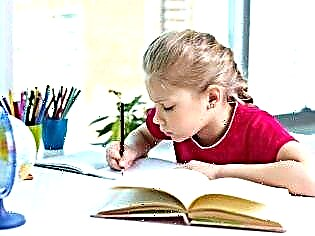

Understanding reading technique
Reading is a process in which two sides stand out: semantic and technical. The semantic means understanding the content of the text, and the technical means fast, correct, expressive reading.
Reading technique is regularly tested in primary school, as well as in grades 5 and 6. Students are given an unfamiliar text that they have to read for one minute. Then the teacher counts the number of words and asks the child 1-2 reading comprehension questions.


The reading techniques check takes into account:
- speed;
- reading comprehension;
- absence of omissions and errors in the pronunciation of words;
- the presence of semantic stress, pauses.
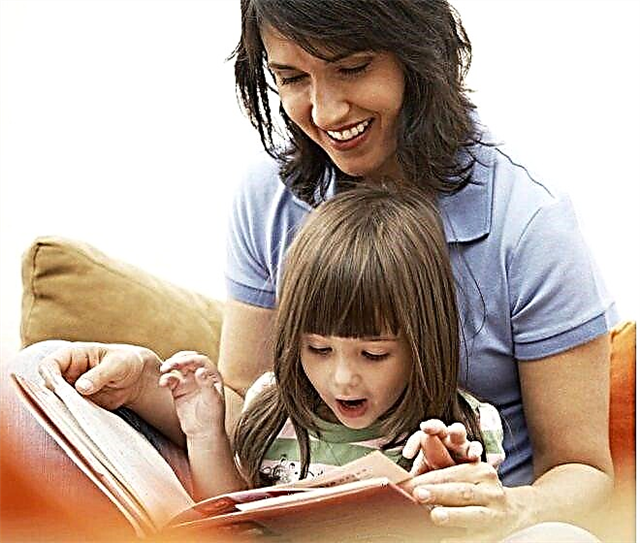
Standard indicators of the reading speed of schoolchildren (per minute):
- Grade 1 - 30-40 words;
- Grade 2 - 40-60 words;
- Grade 3 - 60-80 words;
- Grade 4 - 90-120 words.
To improve the reading technique, the child must gradually, gradually move from slow syllabic reading to reading whole words. By the end of primary school, this must be done, otherwise it will be very difficult for a schoolchild in the middle level to assimilate large volumes of material.
It is worth noting that many children, especially in grade 1, the process of public testing of the reading technique itself is frightening. Errors can arise from here, and this can sometimes explain the low speed. Therefore, it may be worth checking the child again at home. If the result improves, the same will happen with the little reader's self-esteem.

Why is speed important?
Reading speed is a direct factor affecting student performance. It is believed that a normal, adequate reading speed is equal to the speed of speaking, which is 120-150 words per minute. Why is it so necessary for a student to strive for this indicator? The point is simple mathematics.

It has been estimated that in grades 6-7 of a general education school, a student receives 8 pages of oral homework daily (all oral assignments). This is approximately 6.5 thousand words, which will take about an hour at an average speed of 110 words per minute.
To assimilate the material, and not just familiarize yourself with it, you need to read 2 or even 3 times, which increases the time to 2-3 hours a day. Let's add the time that you need to devote to writing assignments.

It is easy to conclude that a poorly read student or will devote most of the day only to lessons, or simply will not torment himself with them, which will affect his assessments.
Among other things, reading speed affects the development process: memory and attention improve. And the reading speed is influenced by the amount of reading: the more, the faster.
Reasons for failure
Your child may be slow to read for several reasons:
- Undeveloped memory. This is not a pathology for a preschooler, so don't be alarmed. It happens that a child, reading in a line, for example, the fifth word, forgets the first. Because of this, the thought is lost, the kid does not understand what the text is talking about, and interest is also lost from this.
- If difficult words come across, the child stumbles and reads them slowly. The reason for this may also be poor performance of the speech organs.
- Low concentration of attention. The kid is easily distracted by various external factors, as well as by his own thoughts, and the interest in reading dissipates.
- Vision angle. It often happens that the child does not see the whole word as a whole, but only a few of its letters. This slows down reading.
- Return to the read. Often the eyes of a young reader return to the previous word or sentence, he re-reads them.
- Inappropriate literature. The texts must be selected in accordance with the preferences and age of the child.

The ability to read well and quickly depends not only on the intellectual abilities of the child. It is worth considering the psychological and physical abilities, diseases, the environment (including in the family).
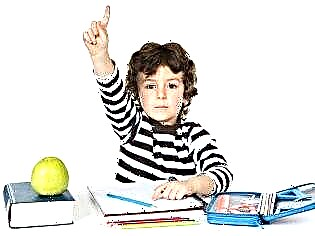

Often, learning is hampered by the baby's lack of confidence in himself, the fear of making mistakes. Or he is simply bored while reading, not interested in the text.
A real look at a child's abilities
You should not demand from the child what he cannot do at the moment. Learning to read should proceed calmly, without nerves, with a great deal of patience on the part of the parents.
If you force your child to pore over books against his will, and then also swear when he cannot squeeze out at least a few sentences from himself, the result will not be positive.
First of all, a parent needs to come to terms with the fact that his child does not have superpowers, he is not a child prodigy, but an ordinary kid who needs help and understanding.
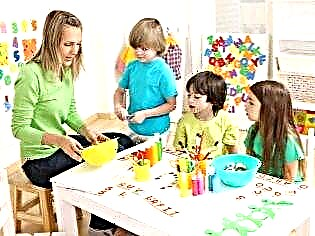

The reading process must be turned into an exciting activity, motivate the student, do not forget to praise him, and in no case get irritated.
Help from parents
To help your baby, it is enough to adhere to a few rules:
- Interesting texts. Do not overwhelm the novice reader with boring literature, even if of a cognitive nature. So that he does not give up reading, it should fascinate him. Choose books according to his preferences.
- Games. The reading process can be turned into a game in many ways. More about them below. You can also arrange home contests for the best reader.
- Read with your child regularly for 30 minutes a day.
- Personal example. It is difficult to instill in someone a love of books if he himself does not love them. Show by your own example that it is interesting and informative.
- Patience. Do not press, do not rush, show restraint and understanding.


- Positive motivation. It is worth talking more about what the child will achieve in the future if he learns to read well. If you constantly insist that he will grow up as an ignoramus, provided that he does not read as expected, the result will be worse.
- Individuality of training. As they say, you can't cut everyone with the same brush. A method that works for one student may not work for another. The same goes for the pace of learning. For everyone, he chooses the right one, which is impossible to do at school, which is why it is so important to do reading at home.


Training
You need to teach your kid to read by involving him in an interesting gameplay. First, you should draw his attention to this activity through games, then hold this attention through various exercises.
Here are some of them:
- Learning the alphabet. We learn new letters every day. To do this, we prepare cards with bright illustrations. Let the kid look for the similarity of letters and objects. Reading uses sounds, not letters, so when learning the alphabet, read the sound, not the name of the letter.
- Exercise wherever you are. Ask your child, for example, during a walk, to name all the objects encountered by a certain letter. If it is hard for him, help, prompt.
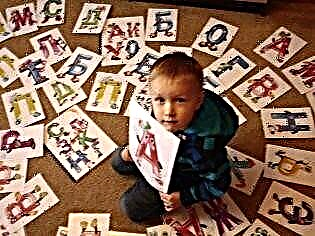

- Attach labels to items in the house. So these objects will be associated in the child's view with certain words. Move your finger over the word and read with it syllables, for example, "SOFA", "MIRROR", etc.
- Word recognition game. Prepare cards in advance with words familiar to the baby ("dad", "mom", "TV", "door", etc.), put them in front of him. One of the parents pronounces the phrase, and the child looks among the cards for the word that is in the sentence.


“Mom has prepared a very tasty lunch” - the child chooses a card with the word “mom”.
- Composing words from cubes or cards. 3-4 letters are selected, from which the baby composes words. We gradually add the number of letters, making the task more difficult. There may be syllables on the cards.
- Learn nursery rhymes and songs with your baby. It develops memory.
- Letter recognition game. Parents set a letter, and the child looks for words with it at the beginning, middle or end.


How to teach a child to read quickly and correctly at 6-7 years old?
You can teach a first grader to read speed using more complex exercises:
- Reading is a vital skill. You must convince your child of this. Leave him notes with instructions, requests, wishes. Sometimes arrange a mini-quest: let him look for a gift according to the signs and instructions.
- Parallel reading. We take two identical texts (for mother and child). Mom reads aloud, changing either intonation or tempo, and the child follows the reading. You can stop and ask the child to continue, or read the last sentence spoken, or find a name. Assignments may vary.
- Tongue Twisters. Be sure to develop your articulation apparatus.
- Words that differ by one letter. You take pairs of words, for example, cat - code, dough - place, etc. The child must explain how the words differ externally, and explain the meaning of each.
- Reading at speed. You mark a minute, after reading you count the number of words. Then ask your child to read the same passage again, emphasizing that they will do better the second time. And it really will work out. This way he will read faster and faster each time.

- Reading to yourself. You always read aloud more slowly, so let the child sometimes read the task to himself, and then retell what he read.
- Development of the visual field. In a table, for example, 5x5, write a letter or syllable in each cell. Have the student read them from right to left and vice versa, from top to bottom, diagonally. Give the task to find a certain letter or syllable, to form a word, as in a filword, only at the simplest level.
- Reading buzzing. The child reads the text to himself, and buzzes out loud like a bee. This exercise is aimed at increasing your concentration.


Exercises for children 8 years old
To develop fluent reading in a second grader, we increase the load, complicate the tasks:
- Game "Words from words". Write a long word, such as "wayward," and ask them to make up a few small ones.
- Proposals requiring adjustment. Write a set of words similar to a sentence, and the child will put all the words in their places: "The guys went to swim in the river."
- Development of anticipation. Take text where words come with missing letters. As he reads, the child inserts the missing elements.
- Reading "Along the tops and roots". We take a ruler, close the bottom of the line and let the child read the tops. When this task is well completed, you can go to the roots.
- "Thinking out loud". The child is asked a question or offered an initial phrase and about 10 minutes to think it over. He must come up with and voice a coherent text. It is necessary to monitor the logic of the sequence, correct presentation, speech errors, correct them.
- You can try reading from right to left. The task is not easy, but it is interesting and even fun for children.
- To complicate the task, the text can be turned over - first by 90 degrees, then by 180. So images of whole words will be deposited in the child's memory.
- Reading by roles. Several people can participate, each voices his hero with the necessary intonation. Also, a child can read for all the characters alone, changing his voice when switching from one character to another.


And a few more tips:
- Vary tasks, do not dwell on one. This will fuel interest.
- Praise constantly. Do not force, do not punish by reading, do not compare with the achievements of other children. Compare the child with himself, his present achievements with the past, aim at the future.
- Show by personal example that a book is a storehouse of knowledge. Read not only for the child, but also for yourself in front of him.


- Read to your child at night.
- Choose stories with an intriguing ending for classes - the young reader should be interested in how the story ends.
- Teach from an early age to a detailed retelling.
- The main thing is to instill in the child from an early age respect for the book, convince that it needs to be handled carefully and carefully.


For how to quickly teach a child to read, see the next video.



